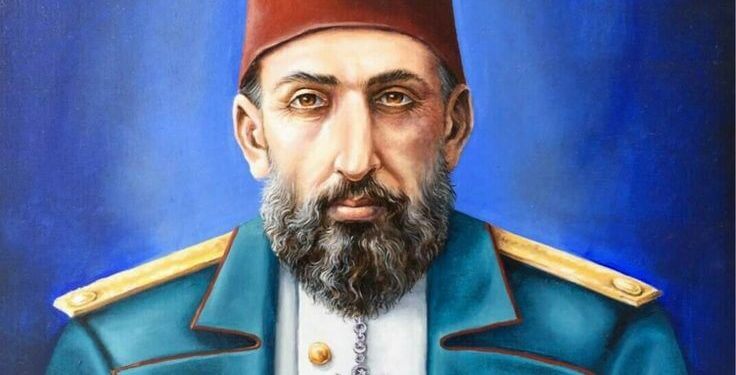II. Abdülhamit Han’ın İngilizce hayatı. Osmanlı İmparatorluğu’nun 34. hükümdarı Sultan II. Abdülhamid’in dramatik hayatı ve hükümdarlığını keşfedin. Osmanlı tarihinin en çalkantılı dönemlerinden birinde iktidara yükselişi, anayasal reformları, otoriter yönetimi, modernleşme çabaları ve nihai düşüşü hakkında bilgi edinin.
Abdulhamid II (1842–1918)
Abdulhamid II, the 34th sultan of the Ottoman Empire, was born on September 21, 1842, as the son of Sultan Abdulmejid I and Tirimüjgan, a woman of Circassian origin. He ascended the throne at a time when the empire was facing one of its most critical and unstable periods.
Rise to Power and the First Constitution
Earlier reform movements known as the Tanzimat, introduced in 1839 and expanded in 1856, had laid the foundation for a more liberal and constitutional government. In May 1876, a group of reformist ministers, including Midhat Pasha, removed Sultan Abdulaziz from the throne and replaced him with his nephew, Murad V. However, due to Murad’s mental instability, he was soon deposed.
Abdulhamid II, known for his earlier support of constitutionalism and his ties to the liberal New Ottomans movement, was chosen as the new ruler on September 1, 1876.
To honor the promises he had made before his accession, Abdulhamid declared the first Ottoman constitution on December 23, 1876. A bicameral parliament was established and held its first session on March 17, 1877. However, the parliament was short-lived. After the outbreak of a disastrous war with Russia, Abdulhamid suspended the constitution and dissolved the parliament on February 13, 1878, using the war as an excuse.

Aftermath of the War and Political Repression
The Treaty of Berlin on July 13, 1878, ended the Russo-Turkish War but greatly reduced Ottoman territories. This increased unrest among the non-Muslim subjects of the empire. In the following years, Abdulhamid focused on strengthening his own authority.
In 1881, his former ally Midhat Pasha and others were accused of being involved in the death of the deposed Sultan Abdulaziz. Midhat was exiled to Arabia and later killed in 1883, likely on Abdulhamid’s orders. After this, opposition to Abdulhamid weakened, with many liberals going underground or fleeing abroad. Divisions among reformists and the effectiveness of the sultan’s secret police helped him maintain control.
Reforms Under Authoritarian Rule
Although strongly opposed to liberal and constitutional ideas, Abdulhamid allowed certain reforms to continue. Many administrative, legal, and educational reforms that had begun in earlier reigns were expanded during his rule.
His greatest achievements were in education. He increased the number of secular schools to train civil servants and technicians and founded the University of Istanbul in 1900.
His efforts in modernizing communication and transportation were also significant. He oversaw the expansion of railroads and telegraph lines as a way to strengthen central authority. In 1888, a railway connecting Hungary, Istanbul, and Ankara was constructed as part of the Baghdad Railway project.
As part of his Pan-Islamic policy, aiming to unite all Muslims under his leadership as caliph, he sponsored the building of the Hejaz Railway to the holy cities in Arabia. This project was funded by public donations.
Although the press was heavily censored, newspapers grew in number and helped increase literacy and political awareness. The publication of books also nearly doubled, especially in literature and education.
Decline and Deposition
Despite these efforts, discontent with Abdulhamid’s autocratic rule continued to grow. In Europe, he was often labeled as “Abdul the Damned” or “Bloody Abdul.” The Young Turk movement, inspired by the earlier liberal ideals of the New Ottomans, worked to restore the 1876 constitution.
Though weakened by internal divisions and repression, the movement gained strength, and by 1907, they had organized under the Committee of Union and Progress (CUP). On July 24, 1908, a military-backed revolt forced Abdulhamid to restore the constitution.
Although he remained on the throne for a short time, a failed counter-coup in 1909 led to his removal on April 28, 1909. He was the last powerful sultan of the empire and died in Istanbul on February 10, 1918.


